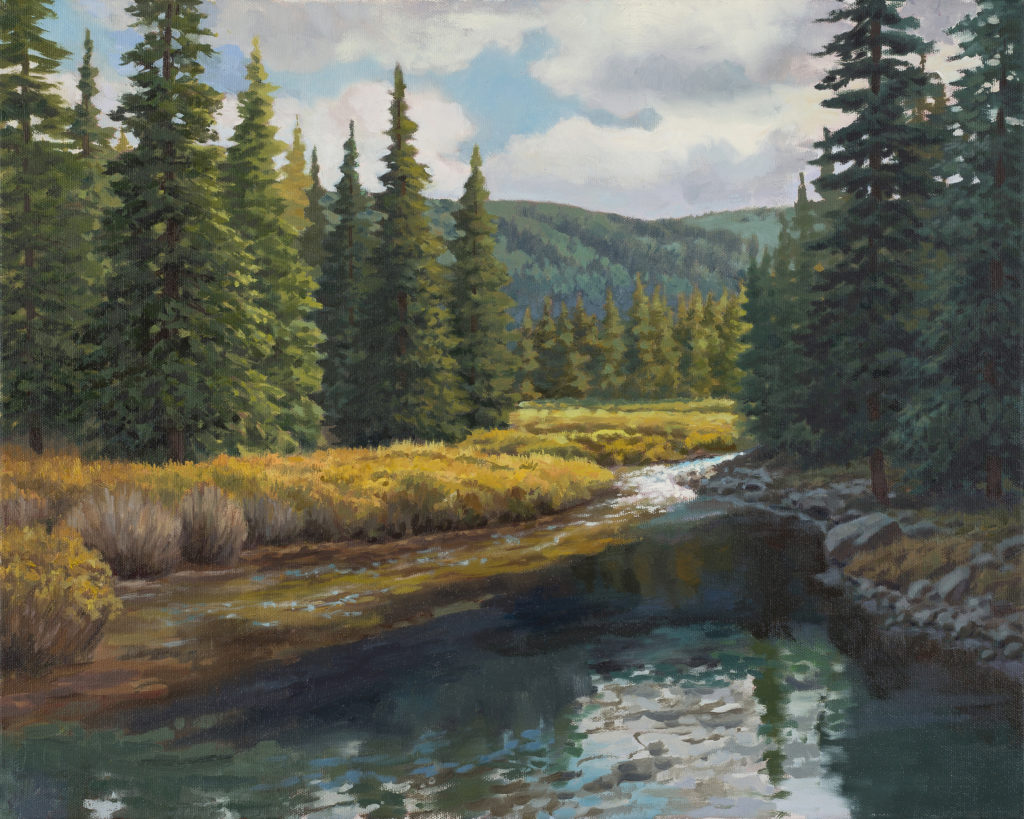Seeing Color with an Artist’s Eye

As an artist one of the greatest challenges is color. Use of color in a painting conveys mood as well as light and value or form. I don’t want to talk about the strategies for color mixing. Rather the choices in your colors and how to create mood that reflect who you are and what you want to say as an artist through
your artwork. Once you are comfortable mixing your colors and capturing correct values relationships it is time for you as an artist to find you color sensibilities. Do you want to render your paintings with the nuanced earth tones, do you want to push complimentary impressionist color, or perhaps push color and value that they become more of metaphor for feelings and mood than a particular scene or object. Since color is such a powerful force in how we feel it is imperative for an artist to sit down and always evaluate and reevaluate your art to decide what it is you want to express over all to your viewers, whether melancholy,irony, mystery, majesty or power. All these are possible depending on what you do with the color. For example if you are creating a painting where your edges are melting from definite edges to soft ambiguities then you add a color scheme of cool colors and blues you will have a painting that feels mysterious almost something reminiscent
of night and it’s cool colors and loss of edges and details. Another example high jumps in colors and contrast can create a feeling of power or even agitation depending on which colors you use. The emotions you can evoke through color are endless.
That may sound all well and good but now what does an artist do? Where do you start? A good start to figure out what you want to do with color is make a list of artists that you connect with the most. Whose use of color you admire. Make a list of your top ten favorite artists. From the artists on your list pick 3 or 4 paintings of those artist’s best pieces and then to the best of your ability analyze how they used color. Try to integrate their approach into your artwork. Ask yourself some questions about, what is it about this artist’s use of color that fascinates you? How are they using their color in the shadows or dark colors as
opposed to the lighter values? Is the tone of the color scheme warm or cool overall? Does it look like their approach is a creative deviation from observation? Are all the shadow areas devoid of detail and blue (just an example of a classic approach to western landscape paintings)? Even take notes if that helps.
Research that artists approach, the paint colors or pallete they used also study their philosophies on color.
The next step is to plan a painting try to use the information you have learned on you listed artists and incorporate that into your painting. Paint scene using what you have learned. Then honestly determine well you achieved the look you wanted with your color use in your painting. If the painting isn’t working try to analyze how consistent you were in the use of color. If you still can’t see why something isn’t working bring in fellow artists or even art instructors and ask for their input. Let them know what you are trying to do and what your thoughts are on how successful you were at achieving you goals. The most important thing is listen to what they say and then take from that what you think is pertinent and ignore what you think
either doesn’t apply or was dead wrong(those who have been in a lot of critiques know what I mean). You always hold on to what you believe or what you are trying to do. Never lose sight of your goal. Now continue to try to incorporate what you have learned into your painting. Keep incorporating what you have learned into you painting. Your sensitivity to the use color and the emotion it conveys will become stronger. Your paintings will become more personal to you and more captivating to the viewer as well. It is a process and takes time but your reward will be worth it. Now quit reading and go pick up your brushes and get to the easel. Paint something beautiful.

This is an excellent, informative article, Kevin. I really like your approach. It has given me am a lot of help.